Chapter 12 - Video
Chapter 12 web version
In the book version of this chapter we will cover:
- The future of video in news
- Getting the most out of video cameras
- How to film, edit and publish ultra-sort videos using Vine and Instagram
- Shooting rough-and-ready video that pits the reporter and viewer at the heart of the action
- Improving your filming, story construction and editing in order to...
- Creating broadcast-quality video.
At the end of the chapter is a range of exercises and projects to enable you to practise what you have learned.
Here we will look at:
- A wide range of videos to illustrate the techniques outlined in the following tuition
- Links to all the tuition and examples in the book version
- Essential updates on the tuition in the book.
Always have the book version of Multimedia Journalism to hand while you use this website – the off- and on-line versions are designed to work together.
12B1 The future of video in news
Steve Herrmann's paper is included in Brave News Worlds: Navigating the New Media Landscape. Here's a link:
www.freemedia.at/fileadmin/resources/application/Brave_News_World_IPI_Poynter.pdf
Online video journalist strategies that work in newsrooms:
http://ijnet.org/blog/online-video-strategies-work-newsrooms-0
12B2 Getting the most out of video cameras
The video tuition in the web-version of Chapter 11 on using DSLR cameras in manual mode is relevant here. If you haven't already done so, take a look at that.
Most tuition on using a video camera in manual mode is specific to a particular model. Search for your camera on YouTube and you should find the tuition you need.
Buying the best camcorder for you: www.videomaker.com/article/15348-buying-the-best-camcorder-all-camcorders-buyers-guide
12B3 Creating ultra-short 6–15 second videos
![]() In the book we cover the techniques used in creating short videos in a range of styles.
In the book we cover the techniques used in creating short videos in a range of styles.
Here, you'll find examples to illustrate those styles.
How the BBC and Guardian are using ultra-short video
BBC Shorts
Here are some examples:
Fracking explained in 15 seconds:
www.bbc.co.uk/news/uk-20710481
This simple animated graphic with voice-over gives a succinct explanation of how the controversial process of fracking is carried out.
Libya’s 'out of control' refinery fire www.bbc.co.uk/news/world-africa-28535041
Dramatic footage of the fire is overlaid with captions explaining the key points of the story. There is wild track sound but no voice-over.
The BBC is distributing such videos not just on its own branded platforms, but on social ones including Instagram. It has an Instagram account at: http://instagram.com/bbcnews

It sometimes refers to its initiative with such videos as Instafax. This example uses current and archive video clips, plus captions and background music, to summarise the story of a trial at The Hague of those accused of assassinating a former prime minister of Lebanon.
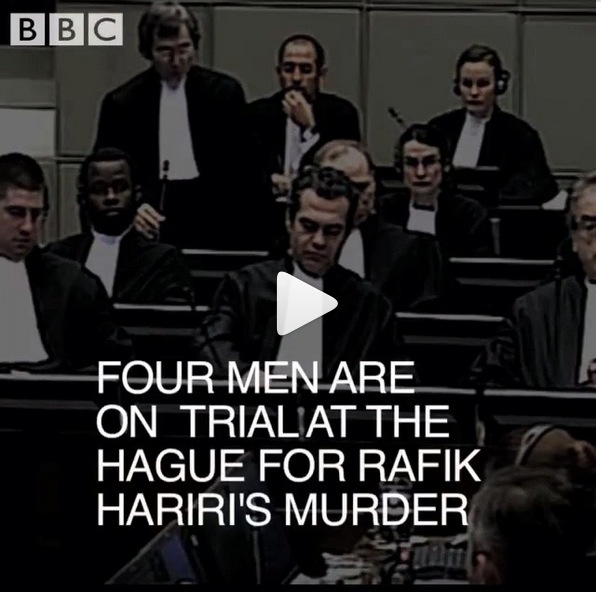
http://instagram.com/p/jOqg8pOj25/
A BBC audio report on the short video initiative: www.bbc.co.uk/news/technology-26115407
How it works: http://thenextweb.com/media/2014/01/16/bbc-news-experimenting-new-short-form-format-called-instafax-delivered-via-instagram/
Debated, good or bad:
GuardianCam
This example features a man who has lived with HIV for 30 years, and uses his voice over a series of short video clips, plus captions of what he is saying:
http://instagram.com/p/rsU8GyKkwt/?modal=true
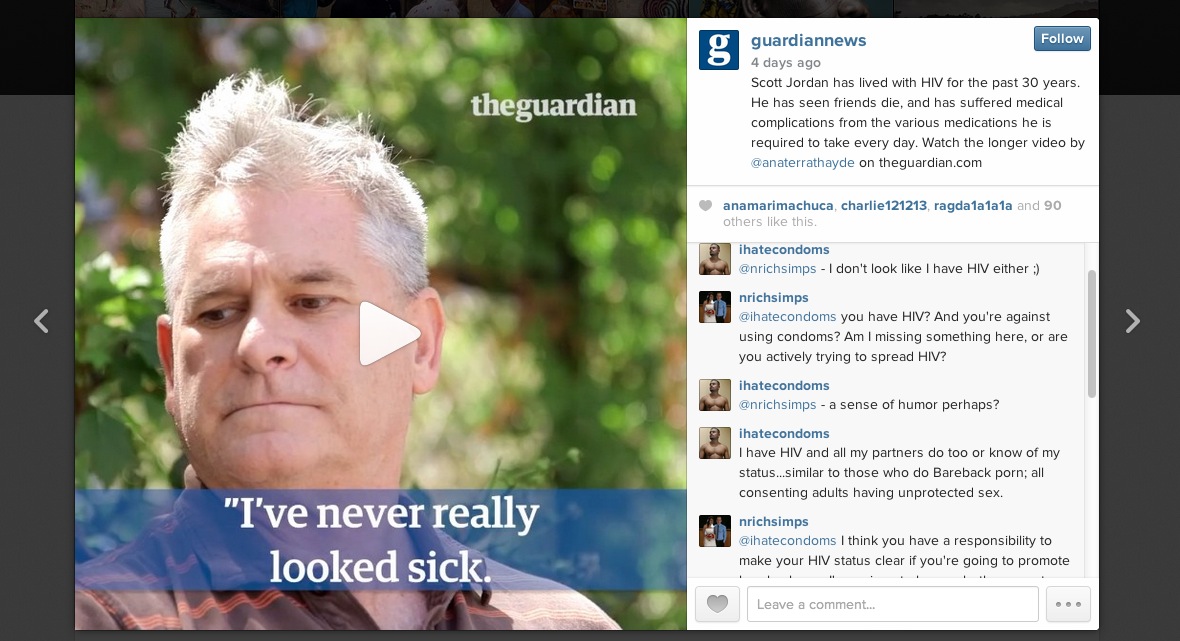
The BBC is also experimenting with clips of 60 to 90 seconds. For example, with a report called: ‘Gaza Strip's troubled history in 80 seconds’: http://www.bbc.co.uk/news/world-middle-east-28294498
Techniques of filming and publishing ultra-short video
It's worth experimenting with both Vine and Instagram – or any other platform that looks promising to you.
How to tell a 6-second story on Vine
![]() Find my tuition on filming and publishing with Vine.
Find my tuition on filming and publishing with Vine.
Here are further resources:
Vine features explained: www.cnet.com/uk/news/vine-shoots-for-6-second-bliss-with-saved-drafts-video-editing/
Vines are ideal for short pieces of action, such as highlights during sports games – but beware of copyright issues.
Examples of Vines
Because you can stop and start filming as many times as you like within 6 seconds you can tell a story within a Vine, or explain something. You could show six slides, for example. Take a look at the GuardiaData account and you'll see that technique practised. Here's an example, https://vine.co/v/MYtJFwb50Ij, showing top A-level subject increases and decreases in candidates.
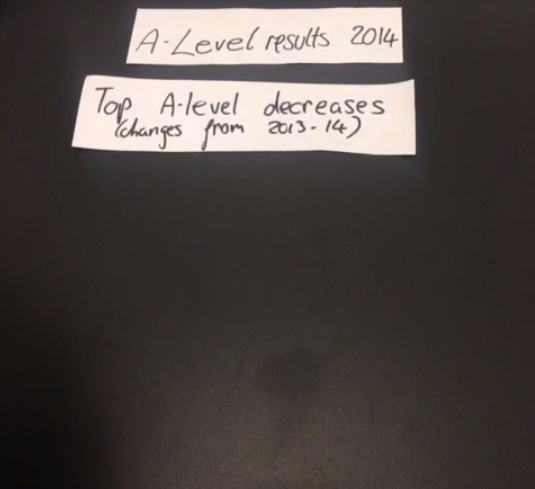
The New York Post made a six second promo for its new iPad app https://vine.co/v/MYHqY7aJEwx
A local UK news website/newspaper the Huddersfield Examiner created a report from a celebrity Viner who was interviewed on national radio:
www.examiner.co.uk/news/west-yorkshire-news/broom-broom-tish-radio-1-7593949
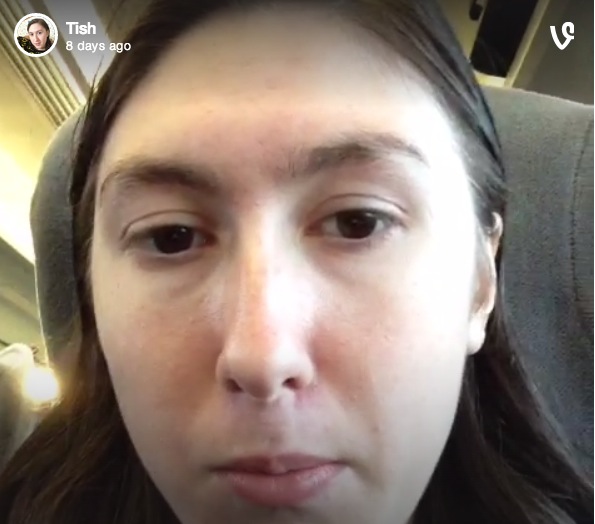
Adding other video into your Vines
Custom Video Uploader For Vine: https://itunes.apple.com/us/app/custom-video-uploader-for/id825514083?mt=8)
Vinyet
Vinyet is explained in this video:
Yahoo Answers on Vinyet: https://uk.answers.yahoo.com/question/index?qid=20131127222952AAeluyg
Tips on editing in Vine
Mashable's on editing in Vine www.wired.com/2013/10/how-vines-new-editing-features-let-you-travel-through-time/
Embedding Vines into WordPress
Find how here: http://en.support.wordpress.com/videos/vine/
Permissions
You are allowed embed Vines by you and others on your website or blog, but need to check the terms and conditions on using the logo here: https://vine.co/logo
How to tell a 15-second story on Instagram
![]() In the book version of this module you'll find a guide to telling 15-second video stories.
In the book version of this module you'll find a guide to telling 15-second video stories.
Here, we'll look at some examples of Instagram videos, and link to further tuition and explanations of how to make them.
Advice for journalists on telling 15-second video stories:
www.facebook.com/journalists/posts/617595314919153
How news outlets can use Instagram:
www.journalism.co.uk/news/7-ways-news-outlets-can-use-instagram/s2/a555317/
As they say: "One way it has been used by news outlets is to share coverage snippets, giving audiences a quick update on news events, and in turn, making content more digestible for viewers with limited time."
The BBC (http://instagram.com/bbcnews) has done that, with clips showing key points from major news stories, such as the aftermath of a typhoon in the Philippines.
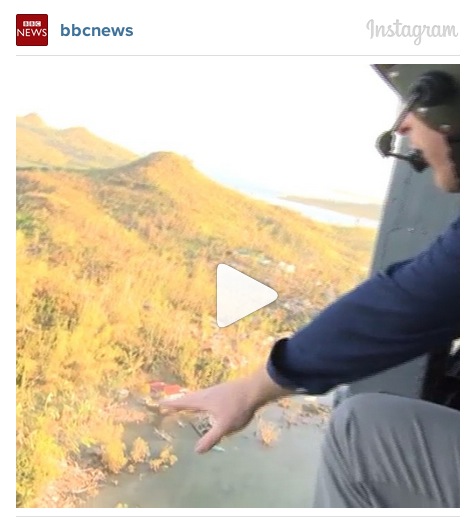
NowThis News, (http://instagram.com/nowthisnews) which produces socially-sharable video, has used Instagram to deliver 15-second answers, or 'Instaviews', from an interview with a political figure.
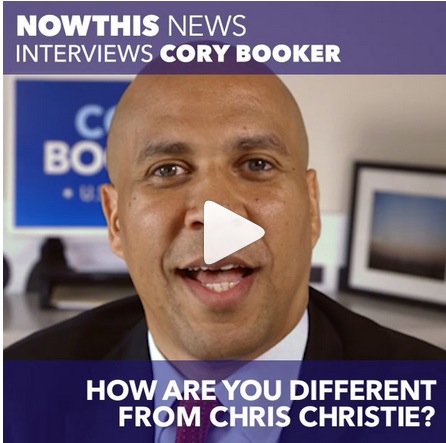
Editing Instagram videos
Instagram has a video help area here https://help.instagram.com/442610612501386/
Using Instagram for video is almost exactly the same as using it for stills. You shoot your video, first moving the slider from stills to video, as you would in your phone's camera. You can stop and start recording – press and hold to record, release to stop – so your 15 seconds can be made up of a series of clips. You can then add filters and review your film. One word on filters – they are fine if you are shooting a scene to illustrate a travel feature, say, but be cautious about their use in news reports – are you in danger of misrepresenting a scene or event if you add a filter to it?
You can pick your cover photo – the picture that shows up before the video starts to play – from any frame in your video.
You can also upload videos to Instagram from your camera roll, meaning you can pre-edit if you like. Simple editing can also be done in the app.
In video mode you will see a thumbnail of a video on the far right. By pressing this you will see the videos in your camera roll. Select a video, press Next and as it plays in the main screen you see the film roll in the bottom area. You can trim the clip by pressing the scissors logo, then moving the sliders at start and finish. When you are done, press Add. Do this with the other clips you want to select from, choose a cover image and then press Next.
Now click to share, write your caption, set your location if relevant and select which social networks to publish to.
There is further tuition on the process here:
http://getmegeeky.com/2013/08/how-to-use-instagram-video-clip-cut-edit-filter-publish/
Pro video editing techniques: http://content.photojojo.com/tips/10-editing-tips-for-making-killer-instagram-videos/
12B4 Aspiring to immediacy / capturing the moment
CNN anchor John Roberts expands on the importance of capturing the moment in this video. But he makes the point that there is still plenty we can do on that score:
Putting the viewer at the centre of the action
Mark Davis is an interesting illustration of the solo video journalist. Profile here: www.sbs.com.au/dateline/reporter/about/id/9/n/Mark-Davis
Michael Rosenblum is a former CNN and BBC TV journalist who got fed up with the instant, short, superficial packages he had to produce for the small screen. He decided he wanted to cover a story as a print journalist would – in depth – but using video. So he went to Gaza and lived for a month with a Palestinian family during the first intifada. He filmed every day and when he returned, got this very different, very personal style of video accepted by various networks.
Here's a video about that:
Here's further discussion on Rosenblum: http://adamwestbrook.wordpress.com/2009/02/12/inspirational-online-journalism-things/
12B5 Improving your filming, story construction and editing
Joe Fryer's broadcast report: I want a wall:
12B6 Aspiring to broadcast quality
![]() In the book we look at how you might cover a story involving a school. If you are reporting in the UK for a media organisation regulated by either Ofcom or Independent Press Standards organisation (IPSO) you'll need to follow the relevant code of practice.
In the book we look at how you might cover a story involving a school. If you are reporting in the UK for a media organisation regulated by either Ofcom or Independent Press Standards organisation (IPSO) you'll need to follow the relevant code of practice.
You’ll find Ofcom's code here: http://stakeholders.ofcom.org.uk/broadcasting/broadcast-codes/broadcast-code/
IPSO's code is here: www.ipso.co.uk/IPSO/cop.html
Here is the IPSO code clause that you must abide by with this story:
6 Children
- Young people should be free to complete their time at school without unnecessary intrusion.
- A child under 16 must not be interviewed or photographed on issues involving their own or another child’s welfare unless a custodial parent or similarly responsible adult consents.
- Pupils must not be approached or photographed at school without the permission of the school authorities.
- Minors must not be paid for material involving children’s welfare, nor parents or guardians for material about their children or wards, unless it is clearly in the child's interest.
Video tutorials
BBC video tutorials on all aspects of broadcast-quality video, and more examples of broadcast-quality video:
12B7 Serving both broadcast and online: a TV news video package, and that footage unpacked for online
SADUNFORTNATELY THE CONTENT THAT WAS POSTED HERE IS NO LONGER AVAILABLE. SORRY ABOUT THAT! WE'LL COVER THIS TOPIC IN A FORTHCOMING MASTERCLASS.
12B8 How a solo video journalist can create great packages
Joe Larson's video:
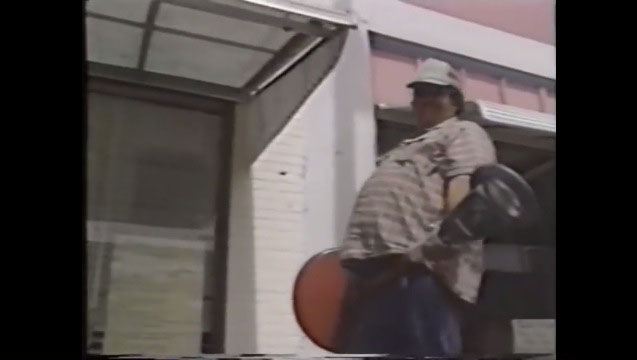
Jason Witmer's video:
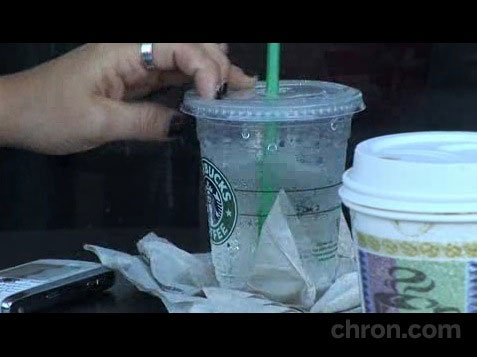
Watch on Brightcove: http://link.brightcove.com/services/player/bcpid716758716?bctid=40751341001
12B9 How to do video packages fast
![]() Find Darren Durlach's step-by-step guide to shooting video packages fast.
Find Darren Durlach's step-by-step guide to shooting video packages fast.
Here's a video on how he makes shooting a story as fast and efficient as he can:
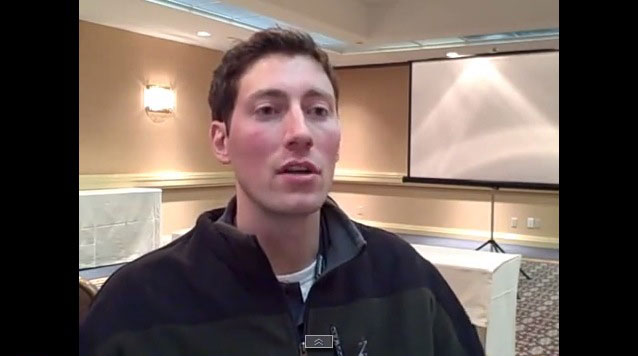
He also shared his tips on how to do stories fast at a recent Poynter NewsU seminar:
www.newsu.org/about/instructors/darren-durlach
Here’s an example of Darren's video work:
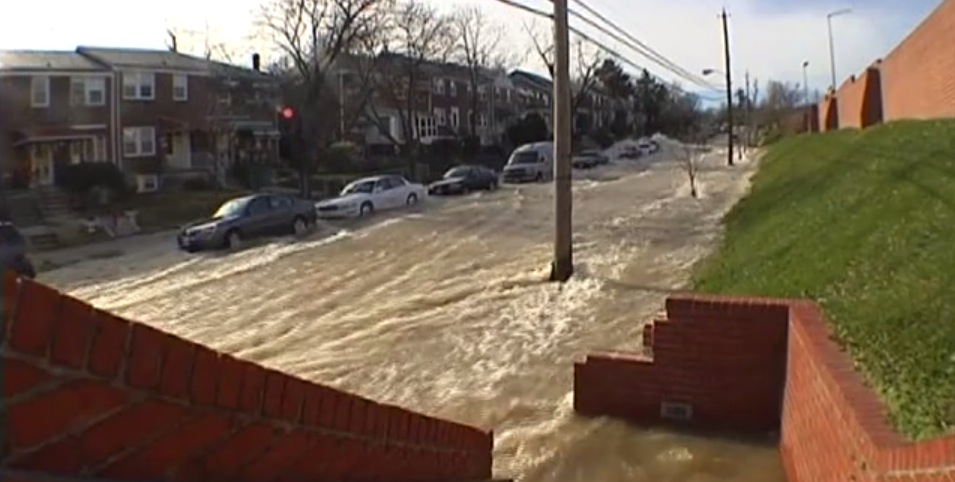
This award-winning report of a flood is called ‘C’mon Son’, for reasons that will be apparent when you watch it. When Darren arrived he shot everything that might go away first, so: the water main, the flood. He got 15 good shots of the water before he was told he had to get back.
Then he found people to tell the story through – he says he put his mic on lots until he found the brothers who are the focus.
When he interviewed them he avoided chest-up shots, the sort that you see when officials are giving their press statements. The interviews are shot using the tight, medium, wide sequencing approach. For variety, one is in silhouette, one is shot through a door.
And much of the sound track is sound bites from the characters. Those sound bites tell the story from their perspective, and the reporter’s narration is edited in to the pauses.
This technique, little used in the UK as far as I'm aware, is called parallel parking, where you see a gap, pull alongside it and neatly reverse your few words of narration into it.
Further advice on shooting video, with examples
Getting movement into every shot
Shawn Montano is a photojournalist at KWGN/KDVR in Denver, who also writes the Editfoundry blog http://blogs.nppa.org/editfoundry/
There is loads of great advice there on editing, but the one I want to focus on here is about movement.
Shawn says: “I like to have as much movement in a story as I possibly can. I often base my edit decisions on movement. If I’m choosing between two shots, I’ll choose motion over a better composed shot with no action happening in the shot." We are, he says, a visual medium, and photojournalists must give their viewers as much to look at as they can possibly handle.
In this post (http://blogs.nppa.org/editfoundry/2010/06/24/movement-in-every-edit-well-almost-every-edit/) he demonstrates a spot news story, edited in about an hour, and talks about how he tries to avoid static shots, and to get some form of movement in every shot.
Here’s a video in which he demonstrates that approach:
If you go to the post you’ll find the points at which he demonstrates how he waited for movement while he was shooting, and how he included those moments in his edit.
There are many great posts at Shawn’s blog. Here’s another I particularly recommend, about what Shawn calls the Rule of Six: (http://blogs.nppa.org/editfoundry/2014/04/28/the-guideline-of-six-in-video-editing/)
Here’s an extract:
The Rule of Six
Montano says he learned about the Rule of Six from Walter Murch (www.amazon.com/Blink-Eye-Revised-2nd/dp/1879505622/ref=sr_1_1?s=books&ie=UTF8&qid=1424694512&sr=1-1)
Murch is a film editor, and worked on Apocalypse Now, The Godfather III and many other big movies.
His Rule of Six contains the following:
- Emotion
- Story
- Rhythm or pacing
- Eye-trace (leading or directing the eye to what the viewer should look at)
- Two-dimensional plane of Screen (or screen direction/180 rule/)
- Three-dimensional space of action (or continuity)"
As Shawn explains, the list was conceived primarily for film editing, but he uses it in broadcast editing. He says he uses it in categories including news reporting.
Shawn uses this video to demonstrate the Rule of Six.
How to bring Hollywood storytelling techniques to your videos
Adam Westbrook describes himself as a multimedia storyteller.
In the videos here, which are taken from this post at Journalism.co.uk, he demonstrates how to bring Hollywood movie techniques to your storytelling.
Here’s a video he shot about journalism students at Kingston University producing their newspaper, which he uses to demonstrate the techniques.
Watch it, and then the one below it, in which he explains the techniques and where and how he has used them:
Here's a video about the making of the film above:
A lesson in video sequences from George Clooney
That video was analysed by Bob Kaplitz, and you can find it and many more great tutorials at his YouTube channel: www.youtube.com/user/Kaplitz.
Notes
- Brave News Worlds: Navigating the New Media Landscape, published by the International Press Institute (IPI)
- www.facebook.com/journalists/posts/617595314919153
- www.theage.com.au
- www.newsu.org/about/instructors/joe-fryer
- www.newsu.org/courses/video-storytelling-workshop-2010-package
- www.newsu.org/about/instructors/darren-durlach